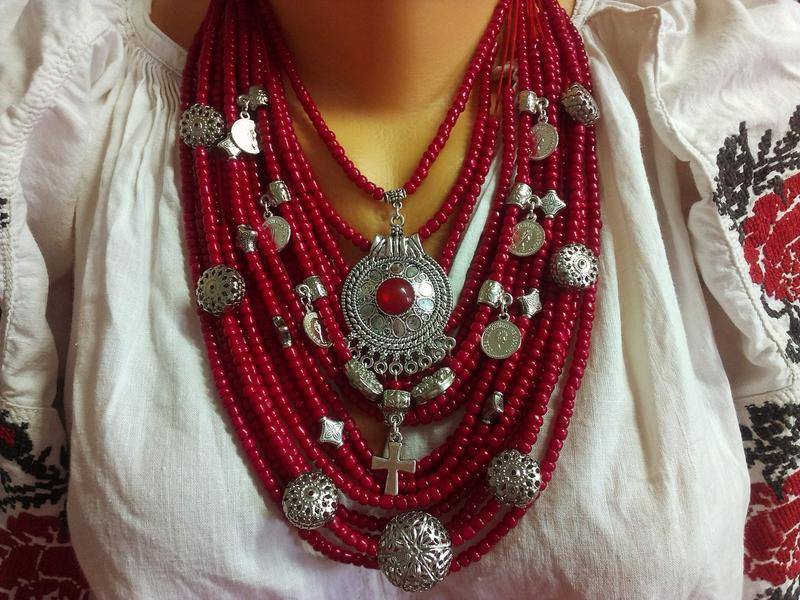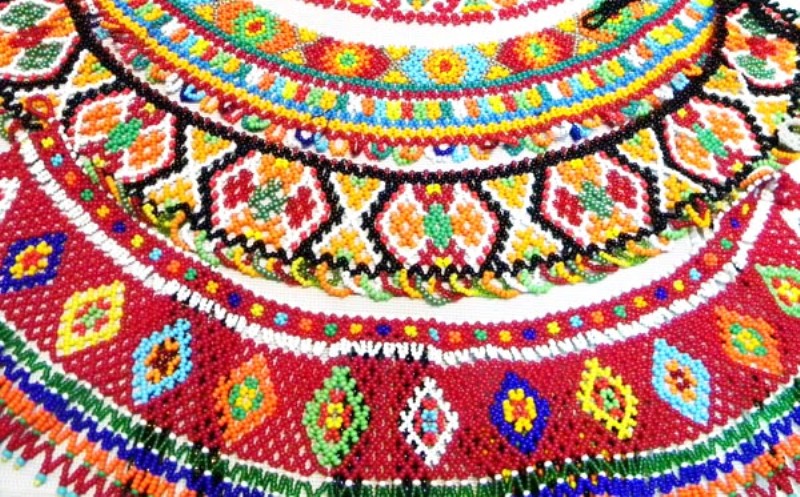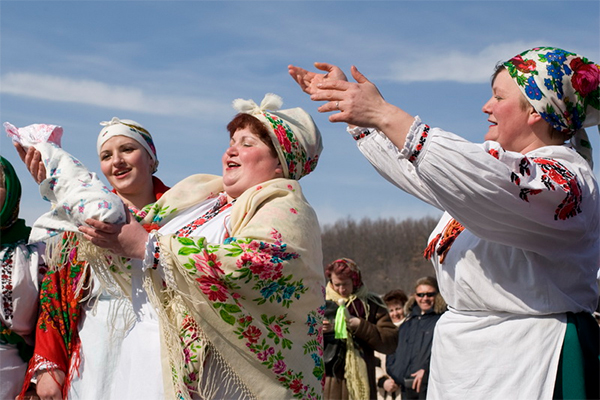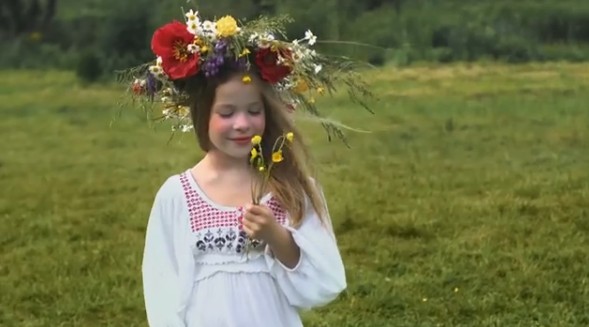Ukrainian women have always cherished the presence of adornments in their lives. From an early age, Ukrainian girls wore necklaces; these accessories were an essential part of their attire, worn both on regular days and on festive occasions. The presence of jewelry indicated a woman’s marital status, taste, and knowledge of necklace-wearing traditions. Ukrainian necklaces were passed down from mothers to daughters, serving as protective talismans and conveying much about their owners. Ukrainian women continue to hold necklaces in high regard, preserving the traditions of their families.
In this article, we will explore the types of necklaces Ukrainian women wore in ancient times, the value attached to these adornments, their significance, and their role in contemporary times.
Most common Ukrainian necklaces:
Red coral necklaces
Red coral was the most popular type of necklace throughout Ukraine. Genuine corals were usually imported from abroad, and they were expensive and considered a status symbol. The quantity and quality of the necklace could indicate the family’s status: the more and better the necklace, the wealthier the family. Corals were an essential part of a maiden’s wedding dowry. It was believed that a girl could not get married until she had a sincere necklace made of noble coral.

Venetian glass necklaces
Venetian glass jewelry is considered one of the most expensive glass ornaments because each bead was handcrafted by skilled artisans, applying intricate patterns such as dots, flowers, and leaves. Ukrainian women highly valued them, treasured them, and could pass them down through generations.
Horn necklaces
Girls and women who couldn’t afford real corals would wear horn necklaces, which were cheaper and much lighter. White beads were dyed in a red color resembling coral. On weddings, corals and horn adornments could be combined to give the impression that the girl had a rich dowry.
Amber necklaces
Amber became a precious ornament that adorned the coral complex in Kyiv and Poltava regions. Typically, in the center of an amber necklace, similar to a coral one, a large bead was added as a bright accent.
Imitations of amber were also popular: such ornaments could be made from more affordable rubber.

Glass necklaces
Ukrainian women also complimented their attire with vibrant red glass necklaces as a substitute for coral. They made the glass necklaces resemble coral. Unmarried girls, on the other hand, wore glass necklaces of a different color, such as blue. It served as a signal to boys that they could propose. Beaded ornaments have been worn for a long time. Beads were imported to Ukraine from Venice and the Czech Republic, and local artisans created intricate designs in Bukovina, Pokuttia, and Hutsul regions. In eastern Ukraine, beaded jewelry was not typically worn.
Ukrainian Necklaces from Beads
Beaded ornaments were believed to protect their wearers and served not only as adornments but also as talismans with protective patterns. These Ukrainian necklaces, Silankas, in particular, often featured precise geometric designs such as diamonds and triangles. In Bukovina, girls crafted ornaments with botanical motifs, including flowers, leaves, and berries.

Zgardy
Zgardy are necklaces adorned with suspended coins (such as thalers) that could alternate with glass beads. These Ukrainian necklaces were typically worn by girls and women in the Hutsul and Pokuttia regions. In Ternopil, coins were hung on a fabric ribbon, with the largest coin traditionally placed in the center of the ornament. In addition to coins, Hutsuls carved sacred symbols such as suns, skies, and thunder on round pendants as a sign of reverence for natural forces.
Dukach
The name “dukach” derives from the word “ducat,” and for the pendant of this delicate and precious ornament, silver coins were most commonly used. The coin was attached to the “bant” – the upper part of the ornament, also known as the medallion.
Natural necklaces
In ancient times, natural necklaces served as protective talismans, believed to ward off evil spirits with their rustling sound. Women would string pierced fruits of the hop plant (small cones) or dried berries on a thread, using a hot needle or nail. Over time, the variety of adornments in Ukraine expanded, and women began wearing necklaces made of natural stones, glass, and intricately woven collars with various patterns.
Patsyorky
Ukrainian necklaces Patsyorky, similar to Venetian glass jewelry, were even more meticulously made with additional decorative elements.
Luskavky
Luskavky, on the other hand, were made from blown glass, making them delicate and fragile. They could easily break.
The tradition of wearing necklaces is being reinterpreted in Ukraine today: girls combine coral and beads with modern clothing while still honoring the tradition of wearing ornaments. In the new necklaces, classic and modern elements are combined, preserving the unique visual style.




